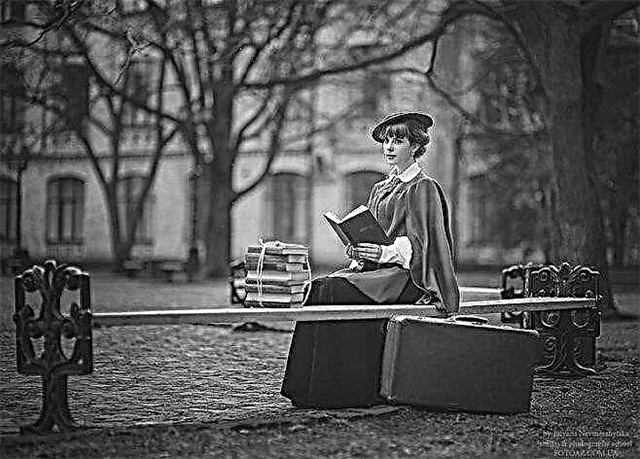To turn visitors into shoppers, watch how they behave in a store
Most purchase decisions are made in stores where visitors are easily led to spontaneous purchases: we see the product and think that it may be useful to us.
If you are a store owner:
- Lure people to the store.
- Create an atmosphere that visitors want to stay in the store. The longer people stay inside the store, the more likely they are to make a purchase.
- Long lines are a negative point. Observe customer behavior, improve the store and optimize sales.
- Focus on store design, product layout, and employee behavior.
Example. The owner of the newsstand noticed that most of his shoppers were Koreans. He bought Korean magazines and significantly increased his sales.
Shops should provide comfortable shopping
When designing a store, consider the physical limitations and habits of customers.
There should be baskets or shopping bags throughout the store so that visitors can easily carry goods. Place the baskets high enough so that customers do not bend over them. The purpose of the store is to sell more goods, so baskets, bags or trolleys should be voluminous. This helps to increase the number of purchases.
When positioning products, consider the movement of people inside the store.
- Visitors always move forward and reluctantly go back. They are unlikely to return to departments that have already passed.
- Buyers are drawn to the right: they prefer to turn right and take products located on the right. Place the product that you want to sell or demonstrate, precisely from this side.
Stores that take into account basic human needs can become more convenient. When people are comfortable and easy to buy, they linger longer, acquire more goods, sales grow.
Stores should create the right mood for customers and guide them
Entering the store, the visitor is not yet ready to shop. First, he needs to switch to the “shopping mode”, for which he needs a place that allows him to “get to know” the store. Special promotions at the entrance will go unnoticed - the visitor is not yet ready to consider purchase offers. Sellers who approach people at the entrance to the store will scare them away.
The stores should have “relaxation zones” that reassure shoppers and make you feel comfortable inside the store. Such zones can be located right at the entrance, for example, stand out with special lighting and a pattern on the floor.
Inside the store, people will need landmarks - pointers. All signs should be placed at eye level. Consider the natural behavior and thinking of visitors.
Customers standing near a shelf with engine oil are likely to think about their cars. It makes sense to put a pointer here, reminding that it would not be bad to buy spare wipers.
The amount of information depends on the situation.
Example. In fast food restaurants, people inattentively read the menu while standing in line. They begin to study him closely while awaiting an order. The content of the menu in this case helps the client to determine the order for the next visit.
Sellers must take into account the differences between groups of buyers, first of all, between men and women
It is important to consider not only common features, but also differences between groups of buyers, especially between men and women. Men and women have different social roles and purchasing behavior.Women spend more time inside the store and buy more, while men are more prone to spontaneous purchases.
When laying out products, consider the gender of the potential buyer.
Example. Lawn mowers are bought by men. Exposing them in a store, focus on engine power, not color.
Shops should provide both men and women a comfortable shopping experience. A clothing store for women should be located next to computer equipment, where men will definitely look. So when shopping, everyone will linger in their own for a long time.
Most products are now purchased by both men and women, so products should appeal to both sexes.
Example. Female consultants can sell computers - traditionally men's products. Goods designated exclusively “male” or “female” will expose homosexual shoppers when choosing the right item.
Differences between groups of customers are constantly changing. Watch changes closely and adapt to them.
Another factor is the age of customers
Retailers and manufacturers must consider the age of customers. The proportion of older people will increase in the future, they will tend to spend more money because they lived in times of economic prosperity.
How can a manufacturer satisfy the needs of older people:
- Products should be easily accessible. Enlarge the font so people with low vision can read the list of ingredients and food labels. This information is especially important for the elderly.
- High-tech products targeted at young people should become more accessible to older people.
- Stores must be physically accessible, including for people in wheelchairs. Employees themselves must be older so that older people can identify with them.
Little attention is paid to the needs of older people when developing products and arranging stores. But in the future, it is the elderly who will make up the majority of the population.
Consider the needs of children - they greatly affect their parents
Children often accompany their parents to the store and influence the shopping of adults.
- Shops should be safe, accessible for children, otherwise parents simply will not go into them. Children like to touch everything - dangerous objects should be out of their reach, and heavy objects should be firmly fixed. People with young children need automatic doors, wide walkways and the lack of stairs.
- It is difficult to attract the attention of adults - children require constant care. Distract the children by organizing play areas.
- Children influence parental purchasing decisions. Products should be placed so that children can easily take them off the shelf. But do not overdo it - parents will be wary of products that are obviously aimed at manipulating children.
Shopping should be fun: let shoppers see in action and try what they can get
Shopping is not just a purchase of goods, it is a special experience. Buyers need to touch and try everything they can buy. Demonstrate your product in action - exhibit furniture as part of a fully decorated room. Engage as many buyers as possible. Use not only background music, but also smells that create a certain atmosphere. Shopping should be extremely positive.
Buyers should have a good time and be in the store of their own free will. But at the same time, the goods should stand so that those in a hurry can quickly choose the right things.
Waiting time and queue length should be minimal, especially at the checkout - this is where actual purchases are made. This step must be completed very quickly.
Online stores will not replace the usual ones completely, but may bring a new shopping experience
Online sales are growing, but online stores still have unresolved issues.When buyers are faced with product flaws, it is difficult for them to get customer support, it is often not clear who to write or call. In ordinary stores, there are consultants.
Conventional stores can take advantage of online services. In the future, ordinary stores will not disappear, but will begin to closely interact with the Internet.
Example. Apple products are no longer accompanied by instructions: buyers are provided with an Internet link to the necessary information. In Japan and the Philippines, customers can pay for goods via mobile phones over the Internet.
Shops will become smaller and more environmentally friendly, they will turn into points of distribution of goods that customers ordered online.
The most important thing
Shopping is not just shopping, but a positive experience and comfort. Retailers should carefully monitor consumer behavior and adjust their stores, taking into account the physical and mental characteristics of people, as well as the differences between groups of customers.
How to improve conditions for visitors and increase profits?
- Pay attention to your buyers. Are there more women than men? Are there any children? Are there any foreigners (what nationality)? Adjust to your customers! If people of a certain nationality love your store, why not make signs in their language?
- If you can’t deal with the long line at the checkout, let the friendly sales assistant apologize to the people in the line. Maybe he will also answer questions about the goods they are going to buy.
- Do not place the goods too carefully - visitors can feel like in a museum. But at the same time, do not pile up all the products.












